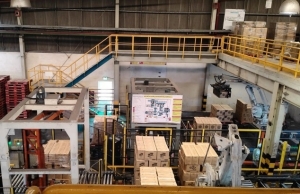21st-century skills crucial for appropriate growth
The World Bank last week projected that Vietnam’s GDP growth is forecast to surge from an estimated 2.6 per cent in 2021 to 7.5 per cent in 2022, with backing from resilient manufacturing and a robust rebound in services.
“Now domestic consumption and demands have been bouncing back surprisingly, especially since Q2, and the situation has been clearer in July, in consumption, corporate confidence, and exports,” said Dorsata Madani, senior economist at the World Bank in Vietnam.
 |
| 21st-century skills crucial for appropriate growth-illustration photo, source: freepik.com |
It was only a few months ago, in April, when the World Bank forecast Vietnamese GDP to grow only 5.3 per cent in 2022. At that time, the bank predicted that the outlook would be subject to heightened risks such as slowing growth in major trading partners, Russia-Ukraine trade effects, and the conflict’s associated sanctions. It also warned that new COVID-19 variants could compound the issue.
The economy grew 2.58 per cent last year, 5.1 per cent in Q1, then 7.72 per cent in Q2, and 6.42 per cent in the first half of this year. The General Statistics Office (GSO) reported that in the first seven months of 2022, the economy witnessed 89,400 enterprises newly established, up 17.9 per cent on-year, and nearly 44,300 businesses resuming operations, up 49.7 per cent on-year.
If the $102.3 billion worth of additional capital from about 31,200 operational enterprises is included, the total newly-registered capital into the economy in the first seven months of this year is $145 billion, an on-year rise of 37.2 per cent.
“The figures show that businesses and investors remain optimistic about the economy’s prospects,” said GSO general director Nguyen Thi Huong. “Almost all economic indexes have been improved”.
For instance, the economy’s export-import turnover reached nearly $432 billion in the first seven months, up 14.8 per cent on-year, with a trade surplus of about $764 million. The export and import turnover of goods was $216.35 and $215.6 billion, up 16.1 and 13.6 per cent, respectively.
Confidence growing
The GSO has also released results of its Q2 survey on over 5,600 manufacturing and processing enterprises. Over 78 per cent of respondents said their Q2 performance was better than Q1. Only 21.6 per cent cited more difficulties than in Q1.
For the third quarter, 85 per cent of respondents expected that their performance will continue becoming better over the second quarter, and only 15 per cent forecasted more difficulties. As for new orders in Q3 over Q2, nearly 45 per cent predicted a climb, 13.8 per cent projected a reduction, and 41.3 per cent expected stability.
“Vietnam’s economy has shown relative resilience and staged a strong rebound after last year’s pandemic-induced slowdown,” said Carolyn Turk, country director for the World Bank in Vietnam. “We expect it to perform well for the rest of the year and 2023.”
Global analysts FocusEconomics told VIR that Vietnam will be among the top regional performers in 2022, with growth averaging nearly three times as quick as in 2021. Pent-up private spending and investment will be the chief drivers of growth, supported by a strong external sector and accommodative government policies.
“The economy grew at a series-high rate in Q2, beating both market expectations and regional peers. Industrial activity growth drove the reading, as Vietnam served as a substitute production destination during China’s lockdowns. Our panellists expect GDP to expand 7 per cent in 2022, and 6.7 per cent in 2023,” FocusEconomics said.
In its Outlook Supplement report released two weeks ago, the Asian Development Bank said that the 2022 forecast for Southeast Asia is marginally upgraded from 4.9 to 5 per cent as domestic demand benefits from the continued lifting of pandemic-related mobility restrictions and the reopening of borders in some economies in the subregion.
Meanwhile, the report said, “In Vietnam, trade continued to expand in the first half of 2022, and domestic mobility, manufacturing, and consumption rapidly recovered. The growth forecast is maintained at 6.5 per cent for this year and 6.7 for next year.”
However, according to the World Bank, Vietnam’s brighter economic outlook will depend on many factors.
“The baseline forecast of 7.5 per cent growth for this year is subject to significant uncertainties,” said Madani. “Heightened geopolitical tensions and conflicts have raised short-term uncertainty and may lead to long-term structural changes in the global economy.”
Carolyn Turk added, “If major economies and export markets such as the US, the Eurozone, and China slow down more sharply than we currently expect, Vietnam’s exports could be further affected.”
Need for education overhaul
The World Bank last week released its biannual Taking Stock report, which analyses Vietnam’s recent macroeconomic trends and economic outlook projections in the short to medium term. The report tackles a critical structural issue that would need the authorities to act on – an overhaul of improving tertiary and higher education.
“This topic is critically important. Vietnam will need a skilled workforce to transform itself into an upper-middle-income economy by 2035. If Vietnam wants to transform its economic model to a dynamic, knowledge-driven, productive, digital, and resilient economy, it needs a workforce with 21st-century skills to grow,” Turk stressed.
To sustain economic growth at the desired rate, Vietnam needs to increase productivity by 2-3 per cent every year, she continued.
“International experiences have shown that higher worker’s productivity can be achieved by investing in the education system, as an important part of a basket of investments and reforms. A very competitive workforce will generate much-needed efficiency for Vietnam in the long term,” Turk explained.
The report argues that transforming the higher education system will be key to boosting Vietnam’s productivity and helping to achieve the country’s goal of becoming an upper-middle-income country by 2035 and a high-income country by 2045.
The World Bank’s senior education specialist Michael Drabble said Vietnam is now represented in the top 1,000 universities worldwide, but is still at the bottom of the benchmarking list, slightly behind the Philippines and Indonesia and trailing far below other countries in the region.
“Despite some improvements in innovation capacity and technology transfer, the lack of government funds for research and development at universities is hampering progress,” Drabble said.
He called for the Vietnamese government to improve access to higher education, enhance the quality and relevance of instruction, and make more efficient use of resources. This could be materialised by expanding the use of digital technologies, enhancing the role of the private sector, and streamlining the regulatory framework.
 | Overseas Vietnamese return with tech skills Vietnam is calling for all resources at home and from overseas Vietnamese people in order to fuel the country’s socio-economic development. Luong Thanh Nghi, vice chairman of the State Committee for Overseas Vietnamese, delves into how they have contributed to national development, with the help of various digital solutions. |
 | IT skills of young labour force – a must for Vietnam’s digital transformation Investing in infrastructure and enhancing the IT skills of the young labour force is a great challenge for Vietnam, urging the country to seek solutions to accelerate digital transformation. |
 | Digital transformation to equip factory employees with future-fit skills Unilever’s in-factory digitalisation process not only brings efficiency, innovation, and empowerment to businesses but also helps equip the workforce – its most valuable asset – with future-fit skills. |
What the stars mean:
★ Poor ★ ★ Promising ★★★ Good ★★★★ Very good ★★★★★ Exceptional
Related Contents
Latest News
More News
- Main drivers for Vietnam’s digital economy future (December 03, 2025 | 11:35)
- Pivotal stage of growth paves way for rise in M&As (December 03, 2025 | 10:00)
- Positive projections for M&A interest from Thailand (December 03, 2025 | 09:40)
- Manifesting the first line of defence in cybersecurity (December 03, 2025 | 09:00)
- The transformational role AI can play in accounting arena (December 03, 2025 | 08:00)
- Unlocking 5G-AI potential in Singapore (December 03, 2025 | 08:00)
- Data-driven strategies vital for a fast-evolving nation (December 02, 2025 | 09:41)
- Policy to practice: how Vietnam can lead the region (November 26, 2025 | 16:03)
- Mobilising private capital at scale vital for climate battle (November 26, 2025 | 15:36)
- VILAF and Yoon & Yang launch Vietnam - Korea Practice Unit (November 26, 2025 | 15:16)

 Tag:
Tag:




















 Mobile Version
Mobile Version